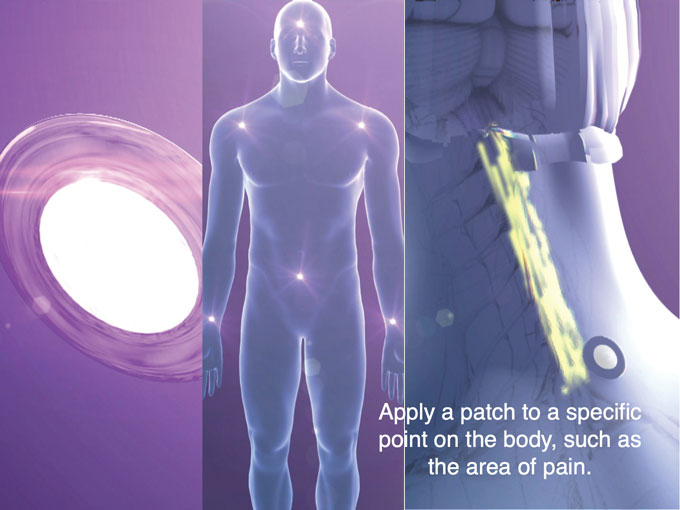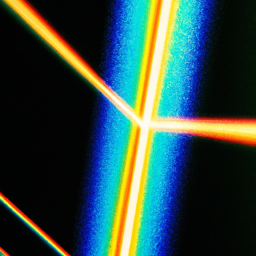In this article, you will discover an insightful exploration of the fascinating world of infrared light therapy. Unravel the intricacies of its mechanisms as we delve into how this therapy works. Gain a deeper understanding of the science behind it and uncover the powerful benefits it can offer for various health conditions. Get ready to embark on a journey of enlightenment and discover the wonders of infrared light therapy.

What is Infrared Light Therapy
Infrared Light Therapy, also known as infrared phototherapy or low-level light therapy, is a non-invasive treatment that utilizes specific wavelengths of light to promote healing and provide various therapeutic benefits to the human body. This form of therapy has gained popularity in recent years due to its effectiveness and versatility in treating a wide range of health conditions.
Definition
Infrared light therapy involves the use of light emitting diodes (LEDs) or infrared lasers to deliver controlled doses of infrared light to targeted areas of the body. This light consists of wavelengths between 700 and 1000 nanometers (nm), which are in the near-infrared spectrum. It is important to note that this therapy utilizes non-visible light that is not visible to the naked eye.
Types of Infrared Light Therapy
There are two main types of infrared light therapy: near-infrared therapy and far-infrared therapy. Near-infrared therapy utilizes wavelengths between 700nm and 900nm, while far-infrared therapy uses wavelengths between 900nm and 10,000nm. Both types have unique benefits and are used for different purposes. Near-infrared therapy is primarily used for cellular rejuvenation and wound healing, while far-infrared therapy is commonly used for detoxification and relaxation purposes.
Infrared Light Therapy and the Human Body
When infrared light is applied to the body, it interacts with tissues in several ways, leading to various physiological effects. Understanding these interactions is fundamental to comprehending the mechanisms of infrared light therapy.
Interaction with Tissues
Infrared light is readily absorbed by the skin and underlying tissues. It creates a gentle heat that penetrates deep into the body, reaching muscles, joints, and even organs. This interaction with tissues is essential for promoting therapeutic effects and triggering physiological responses.
Absorption and Penetration
Infrared light is selectively absorbed by various molecules, such as water, hemoglobin, and cytochromes, within the body’s cells. This absorption leads to the activation of cellular processes and the generation of energy, facilitating healing and tissue regeneration.
Effects on Circulation
One of the significant benefits of infrared light therapy is its positive impact on circulation. The gentle heat generated by the therapy dilates blood vessels, leading to improved blood flow and oxygen delivery to the tissues. This enhanced circulation assists in the removal of waste products and toxins, aiding in the healing process.
Stimulation of Collagen Production
Collagen is a vital protein that contributes to the structural support and elasticity of the skin. Infrared light therapy stimulates the production of collagen, which helps to improve skin tone, reduce wrinkles, and promote overall skin health. This mechanism explains why infrared light therapy is commonly used in dermatology and skincare treatments.
Mechanisms of Infrared Light Therapy
To delve deeper into the mechanisms of infrared light therapy, it is important to explore the specific processes that occur within the body when exposed to infrared light.
Photobiomodulation
Photobiomodulation refers to the ability of infrared light to alter cellular activity through the use of specific wavelengths. When infrared light is absorbed by the cells, it initiates a series of biochemical reactions, promoting tissue repair, reducing inflammation, and enhancing overall cellular function.
Enhanced Cellular Energy Production
Infrared light therapy improves cellular energy production by stimulating mitochondrial function. Mitochondria are often referred to as the powerhouses of the cell, responsible for producing adenosine triphosphate (ATP), which is the main energy source for cellular processes. By increasing ATP production, infrared light therapy enhances cellular metabolism and promotes overall energy levels.
Increased Nitric Oxide Release
Nitric oxide (NO) is a molecule naturally produced in the body that plays a crucial role in vasodilation, or the widening of blood vessels. Infrared light therapy stimulates the release of nitric oxide, leading to improved circulation and enhanced oxygen and nutrient delivery to tissues. This mechanism contributes to the therapy’s effectiveness in promoting healing and reducing pain.
Reduction of Inflammation and Pain
Inflammation is a common underlying factor in various health conditions, including chronic pain. Infrared light therapy has been shown to have anti-inflammatory effects, reducing the production of pro-inflammatory mediators and promoting the release of anti-inflammatory factors. This reduction in inflammation contributes to pain relief and improved overall well-being.
Promotion of Healing and Regeneration
Infrared light therapy plays a significant role in accelerating tissue repair and promoting wound healing. By stimulating cellular activity, collagen synthesis, and enhanced circulation, infrared light therapy helps to regenerate skin and muscles, facilitating the healing process and minimizing scar formation.
Photobiomodulation
Photobiomodulation, as mentioned earlier, is a key aspect of infrared light therapy. Understanding this specific mechanism sheds light on the therapy’s effectiveness in providing therapeutic benefits.
Definition
Photobiomodulation refers to the process by which specific wavelengths of light, including infrared light, modulate cellular activity and function. This modulation occurs through various cellular signaling pathways and gene expression regulation, resulting in numerous physiological benefits.
Activation of Cellular Signaling Pathways
When exposed to infrared light, cells activate specific signaling pathways, such as the MAPK/ERK and PI3K/Akt pathways. These pathways play a crucial role in controlling cellular proliferation, differentiation, and survival. By modulating these pathways, infrared light therapy regulates cellular functions and promotes tissue repair.
Modulation of Gene Expression
Infrared light therapy also influences gene expression within cells. This modulation affects the expression of genes involved in various cellular processes, including inflammation, oxidative stress, and tissue repair. By regulating gene expression, infrared light therapy promotes the production of proteins and factors necessary for healing and regeneration.
Regulation of Protein Synthesis
In addition to its effects on gene expression, infrared light therapy regulates protein synthesis within cells. This regulation includes the production of collagen, which is essential for tissue integrity and repair. By promoting collagen synthesis, infrared light therapy enhances the overall healing and regeneration process.

Enhanced Cellular Energy Production
The stimulation of cellular energy production is a vital mechanism of infrared light therapy. Understanding how this mechanism works provides insight into its benefits for overall cellular function.
Stimulation of Mitochondrial Function
Mitochondria are the cellular organelles responsible for producing ATP through a process called cellular respiration. Infrared light therapy stimulates mitochondrial function, enhancing ATP production and overall cellular energy levels. This increase in cellular energy provides the necessary resources for cellular processes and promotes optimal cellular function.
Increased ATP Production
ATP is the main energy currency in the body, utilized by cells for various functions, including muscle contraction, cellular signaling, and metabolism. Infrared light therapy increases ATP production, ensuring cells have sufficient energy to carry out their normal functions. This mechanism contributes to the therapy’s ability to enhance cellular metabolism and promote overall wellness.
Promotion of Cellular Metabolism
Cellular metabolism refers to the chemical reactions that occur within cells to maintain life. Infrared light therapy stimulates cellular metabolism, leading to increased nutrient uptake, waste removal, and overall cellular function. This promotion of cellular metabolism supports optimal cellular health and contributes to the therapy’s therapeutic effects.
Increased Nitric Oxide Release
The release of nitric oxide is a crucial mechanism of infrared light therapy. Understanding the role of nitric oxide provides insight into the therapy’s effectiveness in improving circulation and promoting tissue healing.
Role of Nitric Oxide in Vasodilation
Nitric oxide acts as a potent vasodilator, meaning it relaxes and widens blood vessels. This vasodilation improves blood flow, enhances oxygen delivery, and allows for better nutrient distribution to tissues. Infrared light therapy stimulates the release of nitric oxide, leading to improved circulation and the associated benefits.
Benefits for Circulation
By promoting nitric oxide release and subsequent vasodilation, infrared light therapy improves circulation. This enhanced blood flow carries oxygen, nutrients, and immune factors to tissues, aiding in healing and providing optimal tissue nourishment. Improved circulation also assists in the removal of waste products and toxins, supporting overall tissue health.
Enhanced Oxygen and Nutrient Delivery to Tissues
Alongside improved circulation, infrared light therapy increases the delivery of oxygen and nutrients to tissues. This increased availability of oxygen and nutrients promotes optimal cellular function and supports the healing and regeneration processes. Enhanced delivery of these essential resources can be particularly beneficial in cases of injury, inflammation, or tissue damage.

Reduction of Inflammation and Pain
Inflammation and pain relief are significant therapeutic outcomes of infrared light therapy. Understanding the mechanisms behind these effects provides a comprehensive understanding of the therapy’s benefits.
Anti-inflammatory Effects
Inflammation is the body’s natural response to injury or infection, but chronic inflammation can lead to pain and tissue damage. Infrared light therapy has been shown to have anti-inflammatory effects, reducing the production of pro-inflammatory mediators, such as cytokines and prostaglandins. This reduction in inflammation alleviates pain and supports the body’s healing processes.
Pain Relief Mechanisms
Infrared light therapy provides pain relief through multiple mechanisms. It stimulates the release of endorphins, the body’s natural pain-relieving substances, providing analgesic effects. Additionally, the therapy modulates pain receptors and neurotransmitters, reducing the transmission of pain signals to the brain. By targeting both the physical and chemical aspects of pain, infrared light therapy offers effective pain relief for various conditions.
Modulation of Pro-inflammatory Mediators
In addition to its anti-inflammatory effects, infrared light therapy modulates pro-inflammatory mediators involved in pain signaling. It reduces the production of substances such as substance P, which is directly involved in the transmission of pain signals. This modulation of pain mediators further contributes to the therapy’s analgesic effects and provides long-lasting pain relief.
Promotion of Healing and Regeneration
Promoting healing and tissue regeneration is one of the key benefits of infrared light therapy. Understanding the therapy’s role in this process provides insights into its efficacy for wound healing and tissue repair.
Acceleration of Tissue Repair
Infrared light therapy accelerates tissue repair by stimulating cellular activity and collagen synthesis. The therapeutic light triggers biochemical reactions within cells, promoting tissue regeneration and enhancing the body’s natural healing mechanisms. This acceleration of tissue repair is especially beneficial for wounds, injuries, and post-surgical recovery.
Stimulation of Wound Healing
Wound healing is a complex process involving various stages, such as inflammation, proliferation, and remodeling. Infrared light therapy aids in each stage of wound healing. It reduces inflammation, accelerates cell proliferation, and promotes the synthesis of collagen and other extracellular matrix components crucial for wound closure. By supporting each phase of the wound healing process, infrared light therapy ensures efficient and optimal healing.
Regeneration of Skin and Muscles
Infrared light therapy stimulates the regeneration of skin and muscles, contributing to improved tissue health and function. It promotes the synthesis of collagen, elastin, and other structural proteins necessary for tissue integrity. This regeneration helps to improve skin tone, reduce scars, and tighten muscles, resulting in improved overall appearance and function.
Clinical Applications of Infrared Light Therapy
Infrared light therapy has a wide range of clinical applications due to its therapeutic benefits and non-invasiveness. It has been utilized in various fields of medicine and healthcare.
Dermatology and Skin Conditions
Infrared light therapy is commonly used in dermatology for the treatment of a wide range of skin conditions. It promotes collagen production, reducing the appearance of fine lines, wrinkles, and scars. It is also effective in improving overall skin tone and texture, providing a non-surgical alternative for skin rejuvenation.
Pain Management
Infrared light therapy offers an effective non-pharmacological approach to pain management. It has been utilized for conditions such as arthritis, sports injuries, and musculoskeletal pain. By reducing inflammation, modulating pain receptors, and promoting tissue repair, infrared light therapy provides long-lasting pain relief and improved quality of life.
Wound Healing
Infrared light therapy is commonly used in wound care clinics to promote efficient and optimal wound healing. It aids in the regeneration of damaged tissues, reduces inflammation, and enhances circulation, ensuring the body’s natural healing mechanisms are supported. This therapeutic approach has been particularly successful in chronic wounds and non-healing ulcers.
Sports Medicine and Rehabilitation
Infrared light therapy has gained popularity in sports medicine and rehabilitation settings. Athletes utilize this therapy to promote tissue repair, reduce inflammation, and accelerate recovery from injuries. It is also effective in managing muscle soreness and fatigue caused by intense training or overexertion.
Mental Health and Well-being
In addition to its physical benefits, infrared light therapy has shown promise in improving mental health and well-being. It has been used to treat conditions such as seasonal affective disorder (SAD) and depression, as exposure to therapeutic light has been shown to improve mood and increase serotonin production. Furthermore, the warmth and relaxation provided by infrared light therapy contribute to overall relaxation and stress reduction.
Safety and Precautions
While infrared light therapy is generally considered safe, it is essential to follow recommended guidelines and be aware of potential side effects or contraindications.
Recommended Guidelines
To ensure safe and effective treatment, it is recommended to use FDA-cleared devices and follow the manufacturer’s guidelines regarding treatment duration, distance from the body, and frequency. It is also important to protect the eyes from direct exposure to the therapy light by wearing appropriate eyewear.
Potential Side Effects
Infrared light therapy is considered safe when used as directed, but there are potential side effects that may occur. These can include temporary redness, itching, or skin sensitivity in the treated area. These side effects are typically mild and subside shortly after treatment.
Contradictions and Precautions
While infrared light therapy is safe for most individuals, certain precautions should be taken. It is not recommended for individuals with active skin infections, open wounds, or skin cancer. Pregnant women, individuals with photosensitivity conditions or epilepsy, and those taking medications that increase sensitivity to light should consult with a healthcare professional before undergoing infrared light therapy.
In conclusion, infrared light therapy is a non-invasive and versatile treatment that utilizes specific wavelengths of light to promote healing and provide therapeutic benefits to the human body. By understanding the mechanisms of infrared light therapy, such as photobiomodulation, enhanced cellular energy production, increased nitric oxide release, reduction of inflammation and pain, and promotion of healing and regeneration, we can appreciate its wide range of clinical applications in dermatology, pain management, wound healing, sports medicine, rehabilitation, and mental health. While infrared light therapy is generally safe, it is essential to follow recommended guidelines and consult with healthcare professionals when needed to ensure safe and effective treatment.





